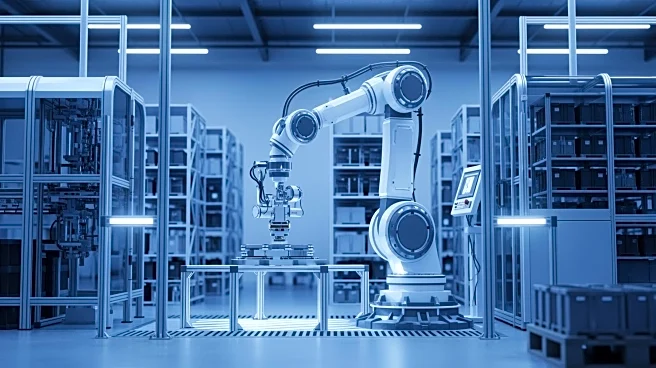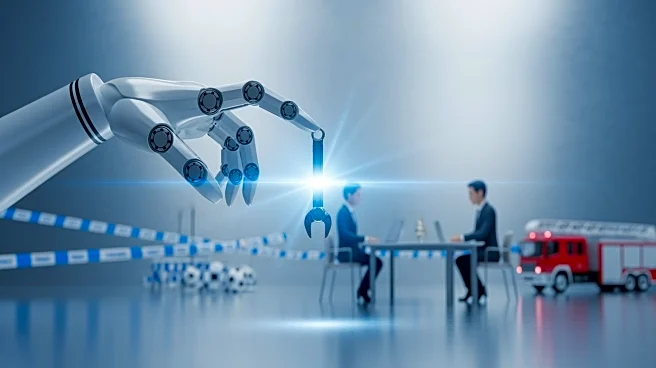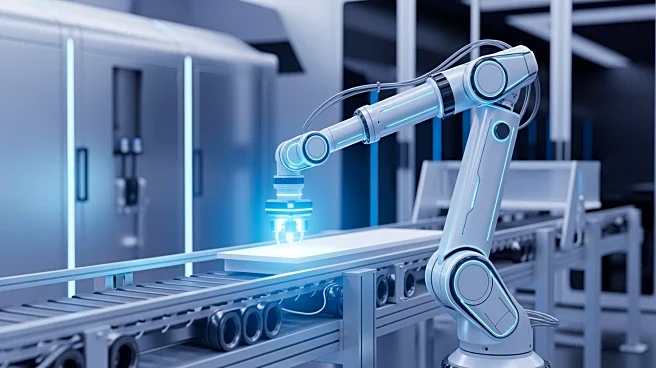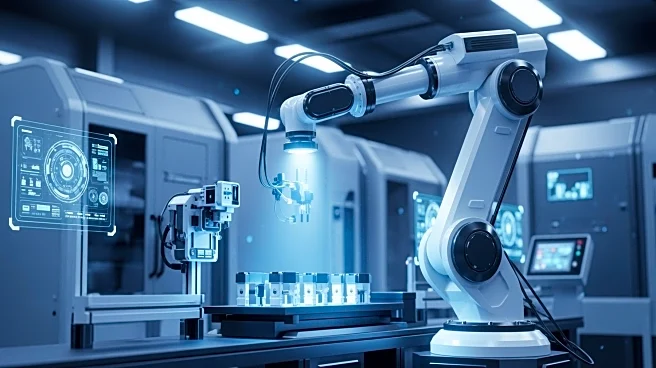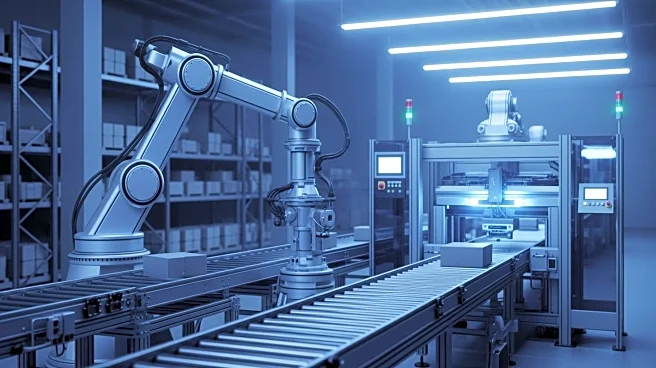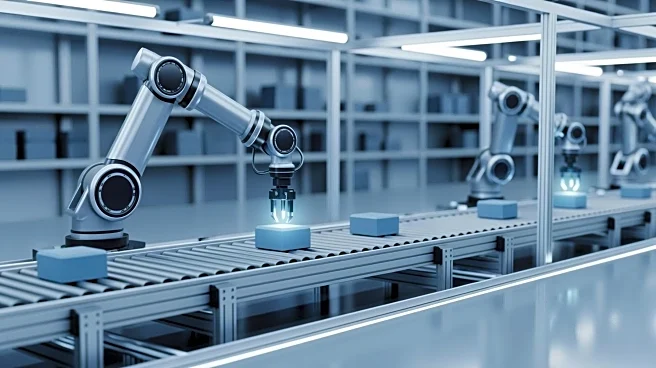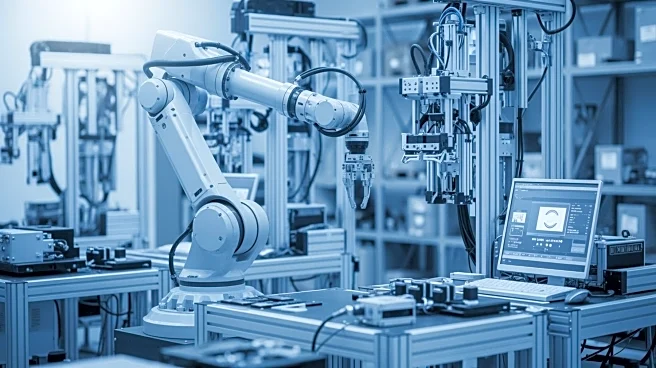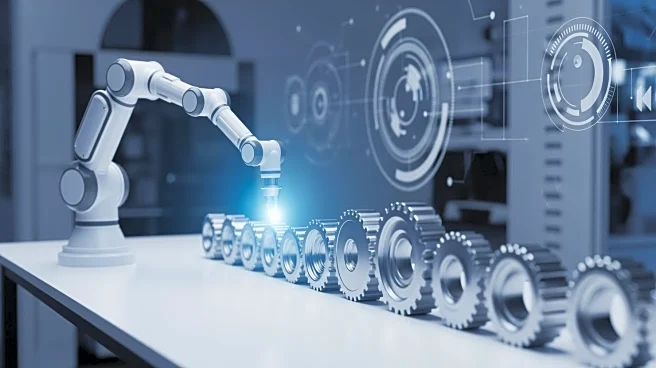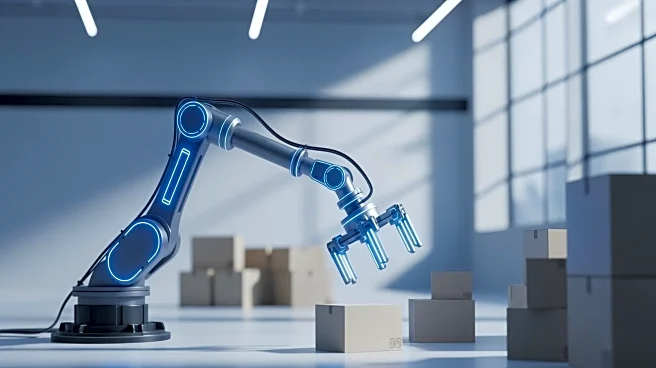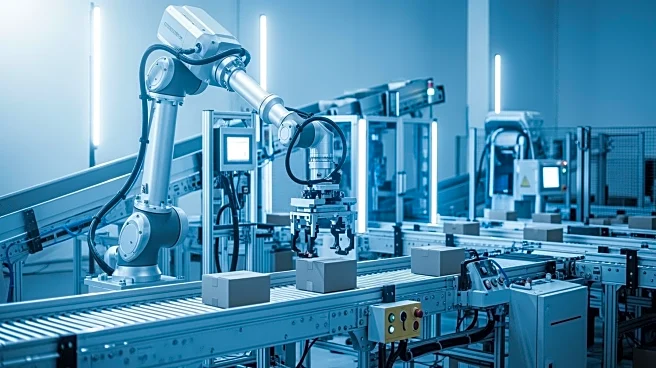What's Happening?
Amazon is advancing its robotics strategy, aiming to replace 600,000 human jobs with robots in its warehouses over the coming years. According to Morgan Stanley, this shift could result in annual savings of $2 billion to $4 billion by 2027. The company
plans to automate 75% of its operations, with 40 next-generation robotic warehouses expected by the end of 2027. This transition is part of Amazon's broader strategy to enhance efficiency and reduce costs, as highlighted by Amazon CEO Andy Jassy's comments on improved delivery times and cost efficiencies due to robotic integration. The move is expected to significantly reduce the need for human workers, potentially avoiding the hiring of over 160,000 U.S. workers by 2027.
Why It's Important?
The shift to robotics represents a major transformation in Amazon's operational model, with significant implications for the labor market and the company's financial performance. By reducing reliance on human labor, Amazon could lower operational costs, potentially increasing profitability and shareholder value. However, this transition may also lead to job losses, affecting thousands of workers in the U.S. warehouse sector. The broader impact on the economy includes potential shifts in employment patterns and increased demand for skilled workers in robotics and automation. The move underscores the growing trend of automation in industries, raising questions about the future of work and the need for workforce retraining.
What's Next?
Amazon's continued investment in robotics and automation is likely to drive further innovations in warehouse operations. The company may face scrutiny from labor groups and policymakers concerned about job displacement. As Amazon expands its robotic capabilities, it may also explore new technologies to enhance efficiency and reduce costs further. Stakeholders, including investors and industry experts, will closely monitor the company's progress and its impact on the labor market. The potential for larger-than-expected savings could influence Amazon's strategic decisions and market positioning in the coming years.
Beyond the Headlines
The ethical implications of Amazon's robotic transition include considerations of worker rights and the societal impact of automation. As the company reduces its human workforce, it may face challenges related to corporate responsibility and the need to support displaced workers. The cultural shift towards automation raises questions about the balance between technological advancement and human employment, highlighting the importance of developing policies that address these challenges. Long-term, Amazon's strategy could influence other companies to adopt similar practices, potentially accelerating the automation trend across industries.
